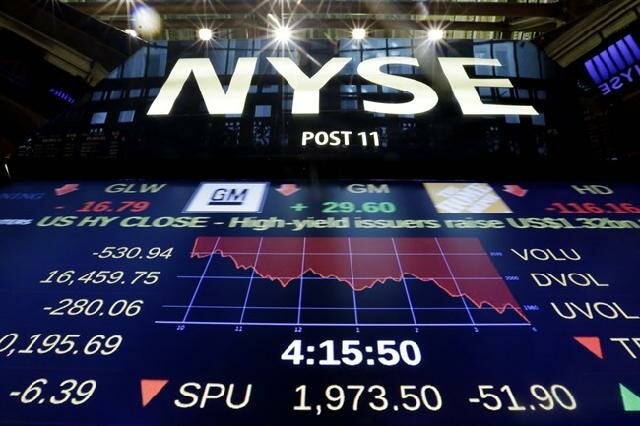Investors interpreted the move as a sign that China’s economy was not doing as well as previously reported. That index fell more than 470 points the day before. That combined with another plunge in Chinese stocks sent off red flags in Asia, Europe and the Americas.
The S&P 500 capped its third-biggest decline of 2015 on Tuesday, sliding 3 percent.
The Dow Jones industrial average was down 56 points, or 0.2 percent, to 16,587 as of noon Eastern time Monday.
The Standard & Poor’s 500 index increased 35 points, or 1.8 percent, to 1,948. Brent Crude, a benchmark for worldwide oils used by many US refineries, fell 88 cents to $48.68 in London.
The price of oil gained 66 cents to $46.11 a barrel.
USA stocks rebounded Wednesday, recovering a significant portion of their losses from the day earlier. The recent downturn has been attributed to market volatility in China and a pending rate hike from the Fed that is expected as soon as September.
Investors were encouraged by positive economic reports that saw decent private sector job gains and an upward revision in worker productivity in the second quarter.
China remains in focus across financial markets. It closed Tuesday 10 percent below its all-time high set in May.
It would be the Fed’s first reverse from its policy in place since the 2008 crisis of ultra-low rates that have pushed up stock prices.
Asian markets had another bumpy day. The Nasdaq Composite Index dropped 49.58 points, or 1.05 percent, at 4,683.92.
European markets also rose broadly. U.K.’s markets were closed for a holiday. This scenario should be supportive for USA stocks.
BONDS AND CURRENCIES: US government bond prices fell, pushing the yield on the benchmark 10-year Treasury note up to 2.16 percent from 2.15 percent on Tuesday. The dollar declined to 121.22 yen from 121.38 yen on Friday.
